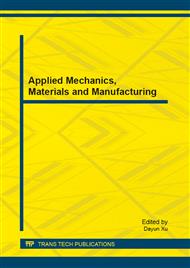p.145
p.150
p.154
p.159
p.165
p.172
p.178
p.184
p.190
Carbon Nanotubes: Good Candidate for VLSI Interconnects
Abstract:
Carbon nanotubes are being seen as a promising new class of electronic materials owing to the change in their properties with chirality and geometry of the nanotube. They are being considered for future VLSI applications due to their superior conductance and inductance properties which are important parameters while considering any material for an interconnect or via applications.In this paper, we report the variation in electrical and thermal conductance as well as inductance of a CNT with its geometrical features using a diameter dependent model. Also the dependence of conductance and inductance of a CNT on the type of nanotubes, tube length and tube diameter has been studied. As we know that at nanometre scale, the electrical and thermal transport properties of the components become extremely important as regards the functioning of the device and it is difficult to accurately measure these properties, therefore predictions using modeling and simulation play an important role in providing a guideline for design and fabrication of CNT interconnects and understanding the working of various other CNT based devices.
Info:
Periodical:
Pages:
165-171
Citation:
Online since:
August 2013
Authors:
Price:
Сopyright:
© 2013 Trans Tech Publications Ltd. All Rights Reserved
Share:
Citation:


